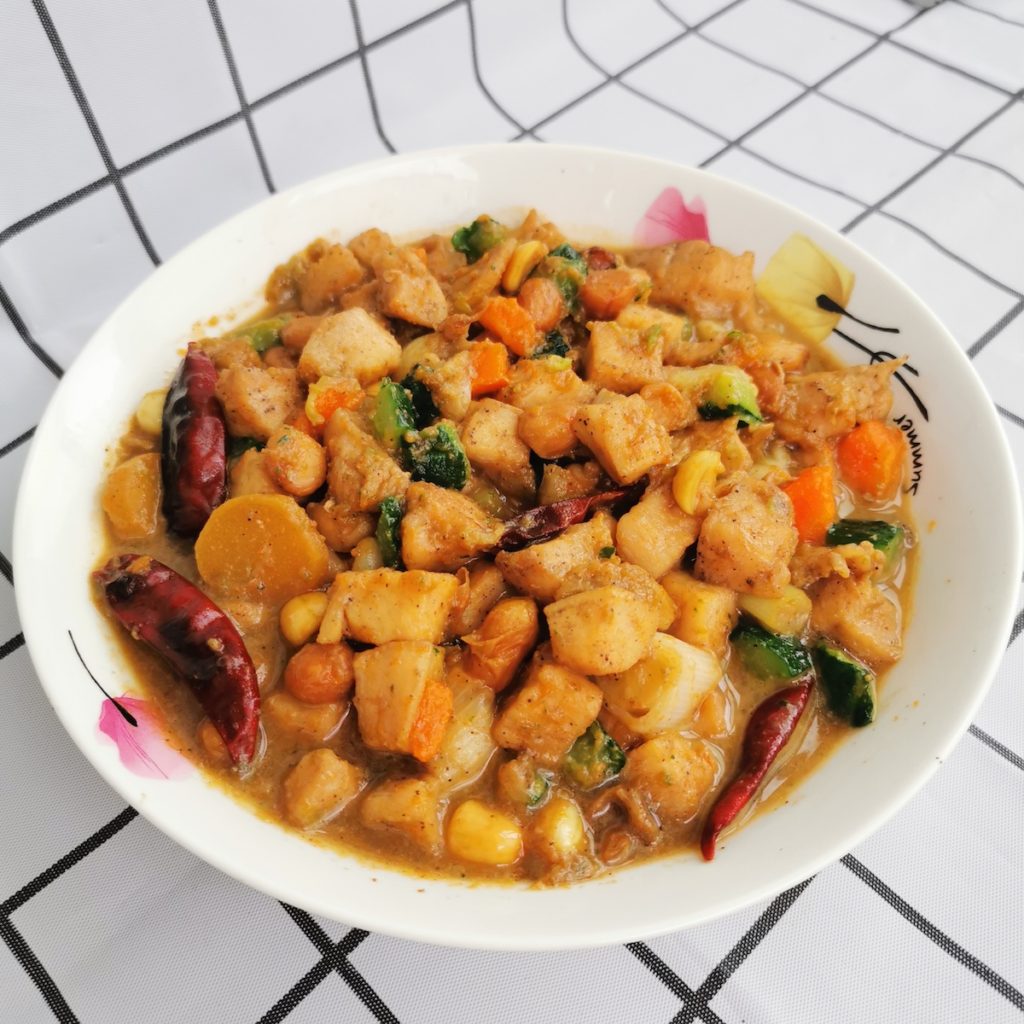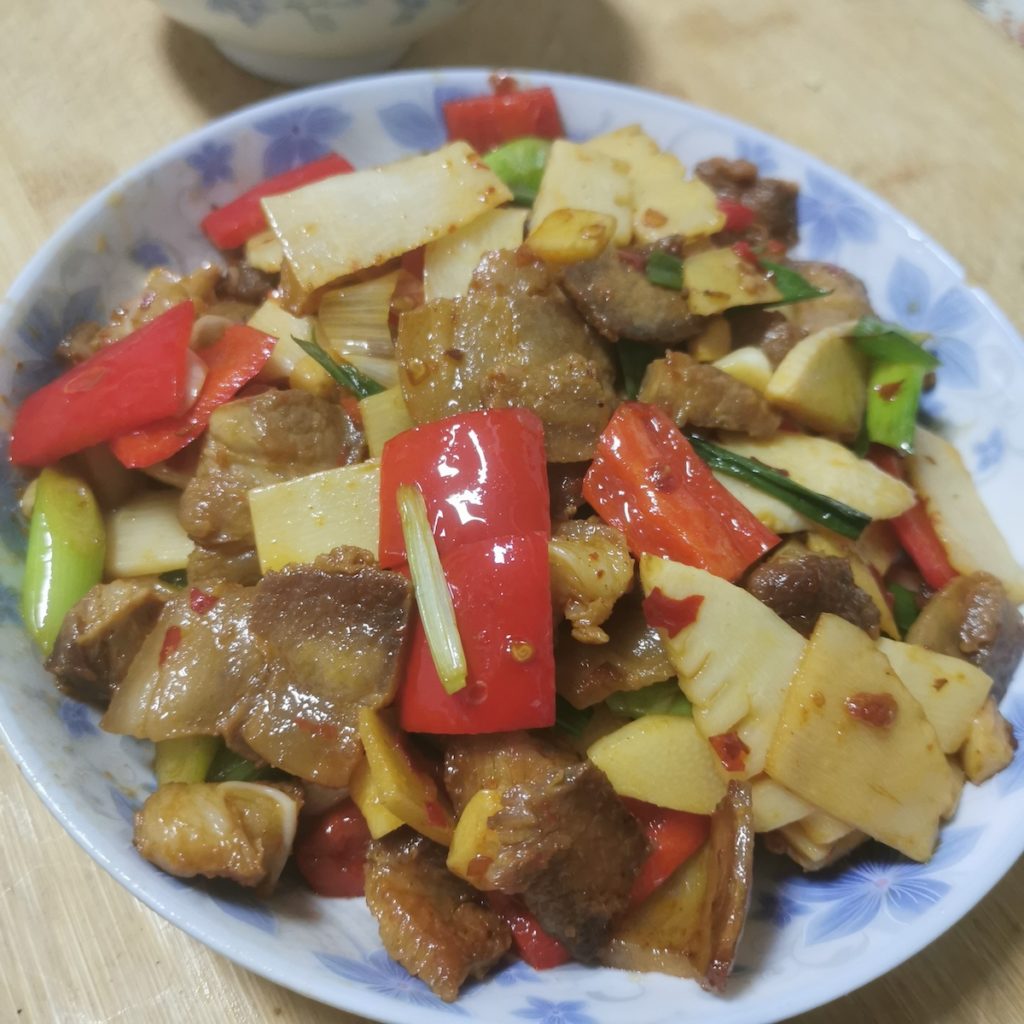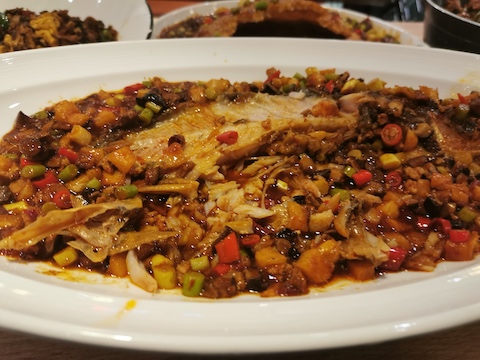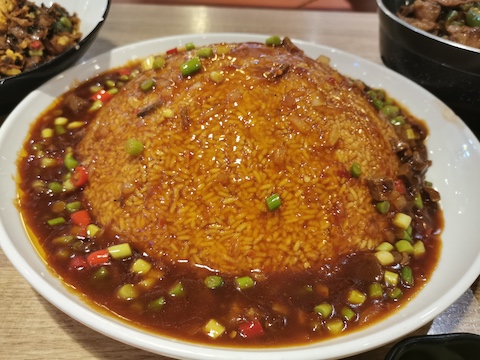China is a country composed of many ethnic groups with a long history. These ethnic groups have accumulated rich cooking experience and knowledge in their daily lives. The different tastes of various ethnic groups and regions, the continuous development of economy, culture, and cooking technology all have influenced the development of the eight major Chinese cuisines: Lu (Shandong), Sichuan, Su, Cantonese, Zhejiang, Fujian, Hunan, and Anhui. These unique cuisines emerged according to the variations of regional climate, plant and animal life, and local eating habits. Three of China’s cuisines are popular around the world: Sichuan, Cantonese, and Hunan.

A word about regional cuisines
China is a large and diverse country, with over 50 different ethnic groups. There are over 60 local and regional cuisines, some of which are also well known outside China, and some which are becoming well known. The eight major cuisines have distinct features, techniques, and ingredients that make them major cuisines with significant distinctions. Beijing (aka Peking) cuisine began as the imperial cuisine of China, and is famous for dishes such as Peking Duck.
My family is Hakka people and Zhuang, and I was born in Guangxi, so I have also included Hakka and Guangxi recipes from my childhood on My Chinese Home Kitchen. My personal favorite dish is Luosifen, or river snail noodles, and this Guangxi specialty is becoming popular around the world, but the best place to get authentic Luosifen is in Liuzhou, Guangxi.
Lu Cuisine
Lu cuisine is also known as Shandong cuisine and is the oldest of China’s cuisines. Shandong cuisine has good techniques for cooking seafood, making seafood exude the most original and delicious taste. In Shandong cuisine, people like to use green onions for seasoning. When sautéing, steaming, frying, and roasting, people will add shredded green onions or chopped green onions as seasoning.
The cooking of Shandong cuisine focuses on fragrance, tenderness, and purity of taste. Each dish has a unique taste. One hundred dishes have one hundred unique flavors, and there is no repetitive flavor. This is the charm of Shandong cuisine.
Sichuan Cuisine
Chuān cài (川菜) is Sichuan cuisine (also spelled “Szechuan”), the most popular of China’s cuisines. I believe everyone is familiar with it. In our daily lives, we are most exposed to Sichuan cuisine, especially people who like spicy food. Sichuan cuisine is now widely spread all over the world.
Sichuan cuisine focuses on the choice and color of the ingredients. It is characterized by sour, sweet, hot, spicy and strong flavor. The indispensable spices in Sichuan recipes are chili pepper, Sichuan peppercorn (huā jiāo), and ginger.



The Sichuan recipes displayed on My Chinese Home Kitchen are some of our most popular, including: Twice-Cooked Pork, Mapo Tofu, Cold Spicy Tofu, and Kung Pao Chicken.



Su Cuisine
Su cuisine refers to Jiangsu cuisine. This cuisine pays great attention to the knife method, and the finished shape of the dishes is exquisite and the taste is moderate. The cooking methods are mainly stewed, braised, red-braised (Hóngshāo) and pan-fried. The taste of Su cuisine is mild, fragrant, and soft, keeping the original taste of the soup. The dishes are rich but not greasy, and the taste is salty with some sweetness. Red-braised meat uses dark soy sauce as a key ingredient.
Jiangsu’s name is a compound of the first elements of the names of the two cities of Jiangning (now Nanjing) and Suzhou. The abbreviation for this province is “苏” (Sū), the second character of its name.
Wikipedia
Jiangsu Province is also home to Shanghai, where I spent some time in early March 2021. I went there for training when I started working with Glenn. I also had some time to tour the city, and visit the famous Yu Garden. Shanghai-style Hongshao Rou (red-braised pork belly) is one of the most famous dishes in China.


Cantonese Cuisine
Cantonese cuisine is another one of China’s eight major cuisines that’s world famous, and includes dishes from Guangxi, Guangdong, and Hainan provinces in southern China, among which Guangdong is the representative. This cuisine has a wide variety of ingredients, many colors, and it is fresh, tender and smooth. In summer and autumn, Cantonese cuisine advocates lightness, and in spring and winter, Cantonese cuisine will be strong.
A true delight for your taste buds is our Cantonese Sweet and Sour Pork with Pineapple. This is our first recipe to combine fruit with meat, and the tastes are truly unique!

Cantonese cuisine is represented by Guangzhou (formerly known as Canton), Chaoshan, and Dongjiang. Guangzhou cuisine focuses on the amount of ingredients and the decoration is beautiful. Chaoshan cuisine has a strong flavor, and uses fish sauce, sand tea sauce, and ginger wine as condiments. There are many sweet dishes. Dongjiang cuisine refers to the specialties of the “Hakka” ethnic group in the Dongjiang basin. This cuisine is rich in oil, mainly salty, with prominent main ingredients and simple ingredients. Dongjiang recipes use meat as the main ingredient and rarely use vegetables.




Zhejiang cuisine
Qiantang-style dishes are called Zhejiang cuisine. Zhejiang cuisine is characteristically mellow, fresh and delicate. Focus is on the form, exquisite ingredients, clean and tidy tableware. Zhejiang cuisine is composed of special dishes from the four cities of Hangzhou, Ningbo, Shaoxing and Wenzhou.
Among them, Hangzhou cuisine is delicately made, focusing on the choice of ingredients, and mainly seasoned with Shaoxing wine, green onions, ginger, vinegar, and sugar. Ningbo cuisine includes especially flavorful dishes from the eastern coastal area of Zhejiang, using seafood as common ingredients. Ningbo cuisine is famous for its saltiness, freshness and smell. Shaoxing cuisine is the flavor of the Han culture in the south of the Yangtze River. The main ingredients in cooking are fish and freshwater shrimp, domestic poultry (chicken, duck, etc.), and beans. Wenzhou cuisine was developed in modern times, and emphasizes seafood. The dishes are less oily and pay more attention to the knife.
Fujian cuisine
The cuisine flavors of Fujian province and Taiwan are called Fujian cuisine. Fujian cuisine is famous for its beautiful color and fresh taste. Because it is a coastal area, it uses seafood as a main ingredient for various dishes. Fujian recipes use sugar to remove the fishy taste. Fujian cuisine also pays attention to the knife method. When the ingredients are sliced, they are as thin as a piece of paper, and when shredded, they are as thin as human hair. Fujian cuisine is very particular about cooking soup. Some soups are white like milk, some are clear like water, and some are golden yellow and full of fragrance.
I lived in Fujian for a while, and one of my favorite dishes is Fujian Salty Rice. This easy-to-cook dish makes wonderful use of Shiitake mushrooms, and you owe it to yourself to try it.

Hunan Cuisine
Hunan cuisine is the third of China’s eight major cuisines that is well-known around the world. This cuisine uses a wide range of ingredients, rich varieties, fine knife work, and hot and sour taste. The dishes are rich in oil and rich in color. Hunan cuisine not only has affordable, home-cooked, country-style dishes, which are quite popular, but also elegant banquet dishes, and even medicated dishes for healing and fitness.
Anhui cuisine
Hui cuisine is also known as Anhui cuisine. Anhui merchants had an important relationship with the formation and development of Anhui cuisine. The characteristic of Anhui cuisine is that it likes to use ham as a side dish for seasoning and rock sugar for seasoning. Anhui cooking methods include stewing, steaming and smoking. In home cooking, people like to use various spices for flavoring. Star anise, cinnamon and bay leaf are common spices in Anhui homes. The Hui culture is also noted for its architecture.


Do you enjoy My Chinese Home Kitchen?
We enjoy sharing these authentic home recipes with you. To learn more about My Chinese Home Kitchen, please visit our About page.
Please leave a comment, or SUBSCRIBE to our newsletter.
For more of our original videos, visit My Chinese Home Kitchen on YouTube and Rumble.


